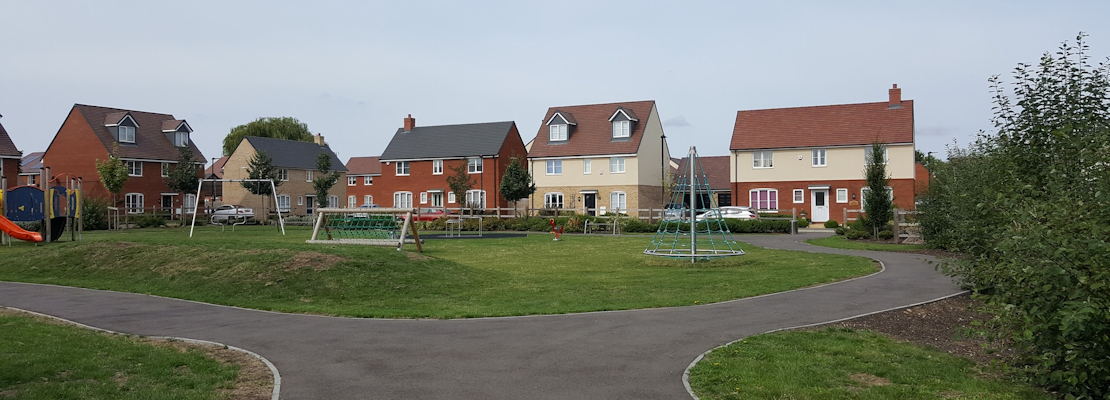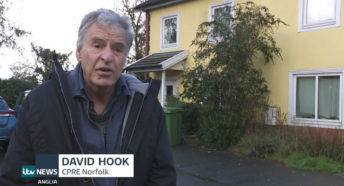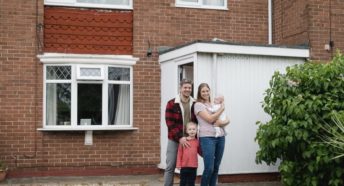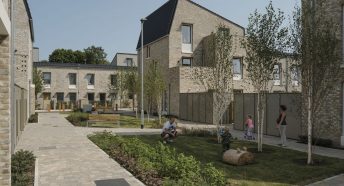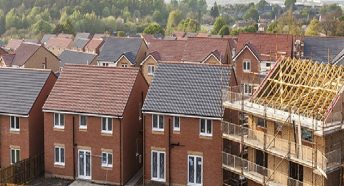How do we solve the housing crisis - and keep our unspoilt countryside intact?
We hear so much about the housing crisis and why we must build many, many more houses to solve it.
Successive governments have pledged numerous measures to fix the issue. Planning has been the spanner in the works in the words of many, although blame now seems to be shifting to include the developers, but not government policy.
Alongside this, economic & development arguments outweigh environmental needs when it comes to protecting land and landscapes.
CPRE Norfolk supports
- the building of social housing (previously known as council housing) as a priority,
- planning for and enhancing green spaces to improve our communities’ physical and mental health,
- protecting our farmland and ability to increase our food security,
- looking after our important landscapes and habitats,
We support doing all of this in a thoughtful and carefully regulated way through the planning system.
Our policies do not extend to proposing a solution to the housing, planning and green space crisis. However, it is easy to extrapolate a solution and reach a powerful conclusion about where to place the blame and how all these issues can be solved.
We do this at the end of this article.
To answer the questions, we must look at the history, and key contributing factors.
- History of planning & housing
- How do we plan for housing & green space today?
- Is planning the issue preventing new housing supply?
- How can we fix the issues?
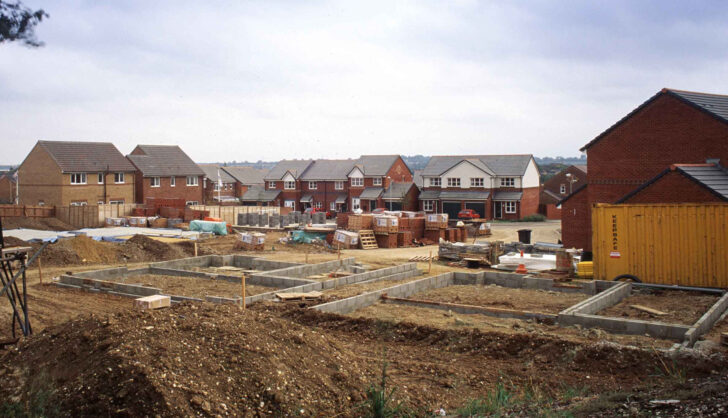
1. History of planning & housing
Apart from some measures to solve specific issues introduced in the 1900s, it was not until 1947 that we gained a comprehensive system with the Town & Country Planning Act. This formed the basis of planning in the UK right up to the current day, even though it is now in a weakened form.
Post WW2 housing was recognised as an important part of the national infrastructure, with 4.4 million council houses built in the 1950s, 60s and 70s. These homes were made available for rent at affordable rates to provide decent housing for as many people as possible who could not buy their own home.
Despite the strength of the planning system, there was a massive surge in post-war house building, leading to the establishment of many new towns. Alongside this, there were important innovations, such as the creation of green belts and national parks. This recognition that the countryside was vitally important and to be cherished originated in the late 1920s. It was carried forward from a legacy to protect the countryside, a policy endorsed by all political parties in 1929.
In 1980, the UK had over 4 million social rented houses, representing about 20% (or 1 in 5) of the 20 million households in the UK at that time. There was also a steady housing market sector, with home ownership being an aspiration for security, not profit. This placed the UK in a very enviable position compared to many other countries, including those in Europe.

The decision to stop government council (or social) house building, and the introduction of ‘right to buy’ where tenants could buy their houses at a knock down price, led to today’s situation. 2.5 million social houses make up just 9% of the current 28 million households. Most of these housing units are now owned by housing associations following the encouragement given to local authorities to sell off this stock – hence the change of name from council to social housing.
The impact of this has been to drive a huge number of people into the private rented sector, and this has seen sustained growth in rentals and investor returns. This has attracted huge numbers of new investors into the sector with ‘buy to let’ mortgages. The number of private lets has grown from 2 million in 2000 to 4.6 million last year. This new money has driven house prices so high that we now see a very destabilised market, unaffordable for many. This un-affordability extends to the rented sector as well.
Lenders have poured fuel on this fire. In the 1970s a mortgage would often be based on a maximum of 2.5x to 3x salary. Lenders would only look at a single’s not a couple’s joint income. Now, lenders can offer over 5 times joint salaries. This has pushed house prices up and exposed people to high levels of debt, with dramatic hikes in mortgage payments when rates rise.
Incentives such as ‘help to buy’ have also fuelled price increases, ironically making houses out of reach for even more people. This is also a financial burden on the taxpayer, as the private rented market is funded to a large extent by the taxpayer via housing benefit.
Interestingly, there are more houses than households in the UK. However, when you include empty houses, second and third homes, holiday lets, hidden households (for instance, people still living at home who cannot afford to rent or buy), it explains why there is a deficit in terms of availability.
We will come back to ‘the housing crisis’ later.
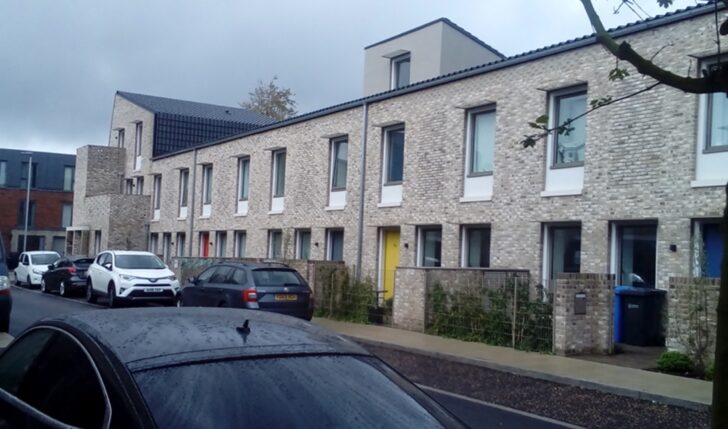
2. How do we plan for housing & green space today?
The whole system of planning for housing has shifted to government setting housing targets for local authorities. With the ‘build build build’ mantra from the main political parties, these targets are pretty high. Local authorities add ‘buffers’ which unnecessarily increase the targets. This further increases the land that has to be allocated.
Local authorities do not build houses, so how can they try to turn targets into reality?
This is directed through the ‘Local Plan’ process. Each local planning authority (often a district council) has to produce a local plan. These plans cover a period of around 20 years, albeit it is a requirement for them to be rewritten every 5 years.
These plans now really focus on housing, not all the other issues you would expect a plan to include. There are many words about services, green spaces, the environment, transport and jobs but often no proposals to be followed through. Part of the issue is the lack of capacity in planning departments, and that planning is now a political football having previously existed outside the political environment.
Rather than saying where housing would be best be built, the councils put out an invitation to land owners to put sites forward for development. They then select from the sites offered to get to the required house site numbers. Instead of a considered plan, we get a random site allocation. Once the plan is approved, these sites have the presumption of planning consent.
One example to show the pointlessness of these targets is found in the Joint Core Strategy Local Plan for Norwich, South Norfolk and Broadland. The housing target in this plan was so unnecessarily large that land allocated for 30,000 houses has not yet been built out. These unused sites have just been carried forward into the newly emerging Greater Norwich Local Plan in which the authorities have allocated even more land for housing without insisting that the existing sites for 30,000 dwellings are developed first.
In our view, this land currently allocated for market housing must be developed before any new sites are allocated for development. A CPRE Norfolk campaign to achieve this objective has attracted the support of 161 parish and town councils throughout the county.
There is a serious democratic deficit in the local plan process.
How many communities know about or get involved in the consultations that precede the production of the plan?
We get many people contacting us when detailed planning applications are submitted. They are unaware the land has already effectively got the equivalent of outline planning consent because it has previously been allocated for development in the local plan. They find they have a real issue on their hands and as far as they are concerned there is no local involvement. Objections at the planning stage are therefore too late to prevent development and only the more minor details of an application can be amended.
Some parishes have produced neighbourhood plans, which is a good thing, but they must fit with the objectives of higher order plans (e.g. District Council plans) and this often means that what local people would really like to see happen is unattainable.
3. Is planning the issue preventing new housing supply?
Many politicians and commentators say that we must remove the shackles of planning control to unleash a new wave of house building. History proves that this is simply not true, and just leads to poor development choices, and poor-quality dwellings.
If we look at new homes completed by private companies, housing associations and local authorities in the United Kingdom from 1949 to 2020 then this can be fully evidenced – the table below shows house building numbers in 1000’s (source – Statista).
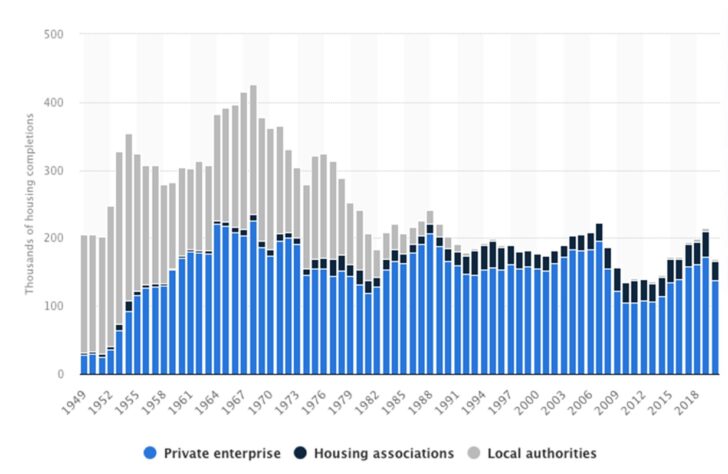
Even in the recent property boom, where the house building figure reached 252,000 in 2022, this was still short of the government’s target of 300,000. In 2023 and 2024 we can expect the figures to be well down as the market stalls and developers only build to sell at the prices they require.
The planning system has now been diluted, and you can see from the table that private house building has not changed over decades, only government funded council (social) housing. The impact of the dilution and weakening of the planning system has not increased new house completions, but has allowed developers to build on unallocated greenfield sites, and under deliver on social housing requirements specified in the original planning consent.
In many places the planners have done their work. They have allocated more than enough sites to facilitate the building of huge numbers of houses. It is the developers who are failing to build out these sites. They are the blockers not the planners.
One of these loopholes arises from the house building targets given to local authorities – even though they do not build houses!
An example of this loophole.
The district council is required to ‘build’ 40,000 houses over 20 years via the target set by the government. This is 2,000 houses a year, or 10,000 every 5 years.
Each year the authority has to confirm with the site owners whether they plan to bring their site forward for development in the next 5 years. There is no disadvantage to land owners saying ‘No’, as they can still bring forward the site at any time. However, if they do say ‘No’, the authority may not be able to show they will have land available to get the 10,000 houses built over the following 5-year period.
If they cannot demonstrate this, a loophole in the system (the five-year supply rule) allows developers to apply for consent on other sites where they can make bigger profits. These profitable sites will not have been formed part of the allocation in the local plan, and the developer will almost always be able to get consent on appeal should the district council object. Any under-delivery in any year simply increases the future year’s targets.
We have lost a lot of green space that should have been protected this way, as developers will target greenfield rural sites over everything else as they are cheaper to build and attract higher prices.
The pressure on councils varies depending on these government targets calculated by the Office of National Statistics, but there is always political pressure to increase the numbers further, as a ‘buffer’.
Another issue is that the system allows developers to make 15-20% profits on their developments.
Typically, a planning consent would include certain requirements. One requirement would be the provision of affordable and social housing in the scheme, and specific numbers would be included. The developer would promise that for example 33% of the houses built would be ‘affordable’ and obtain planning permission based on this promise.
Later on, the developer would submit a development appraisal for the scheme (a viability study) which would include the land price. Land prices are very over-inflated and represent a high proportion of the development cost. This viability would more often than not show the developer cannot make the mandated profit level.
As a consequence, the requirements for social and affordable housing would be reduced, often more than once, and sometimes to zero.
We have personally seen evidence of this in our few years working in local government. The system allows a double profit to be made against development costs and the land price. This is why we see new schemes hardly deliver anything in terms of social housing – the target is over 30% of new houses in this sector but we get under 10%.
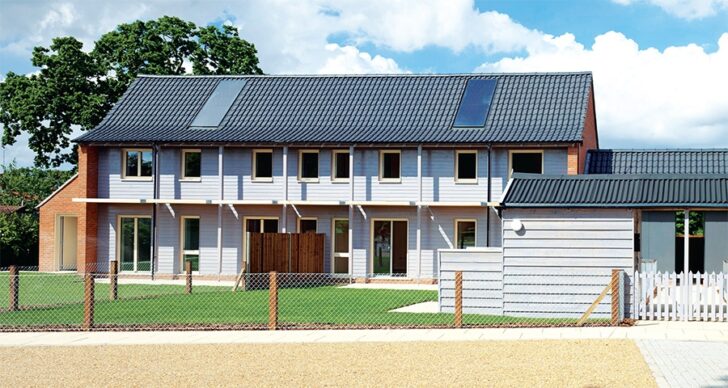
4. How can we fix the issues?
Whilst CPRE Norfolk has no set policy on how the housing and green spaces crisis should be solved, we have policies on the provision of social housing and green spaces protection. If we develop those themes there is the potential to fix the issue.
It will take bold political decisions around how the government invest in housing, what status it has and an acceptance that the planning system is a good thing that has not stopped development since its inception in 1947.
Today, with unaffordable private rents, pressures on income, unaffordable mortgages, younger people trapped in living at home, and no-fault evictions as landlords try to get out of the market to realise capital or to let to someone else, demand for social housing is rising.
Even though this demand is not accounted for, delivery of these houses off the back of market housing development has stalled, as developers are not building in a depressed market. In other words, the peaks and troughs in market and social housing are counter cyclical. Social housing demand can never be met from market developments, which may not be in the right location in any case.
We have to conclude that trying to deliver social housing through market developments is totally flawed, and has not worked.
Affordable housing
We have talked about social housing, but you will also have heard of ‘affordable housing’. What is that? This includes social housing but also ‘affordable home ownership products’.
The government defines a number of categories of housing in this affordable definition. They have committed financial incentives to get 180,000 built in this affordable category between 2021 and 2026 inclusive, which equals 30,000 a year.
Within social rented housing there are now two categories, one at 40-50% of ‘market rents’, and the other at 80% of market rents – so not all social rented housing is necessarily as affordable as it once was. We should entirely focus on the provision of social housing at the lower level of rentals if we wish to see the housing issue fixed.
Is the target of 180,000 new social houses adequate? The government in 2018 thought that 270,000 were needed, but evidence says that this number is a huge under-estimate. 1.5 million new social houses would be closer to the mark.
It is absolutely essential that the ‘right to buy’ must be brought to an end.
Many social houses are lost through sales and demolitions. In 2020/21, 7,500 new social rented houses were built. However, in that same year 14,100 were lost. Even if 30,000 new affordable houses were built each year, the net increase would only be half that figure.
In 2011 to 2021, 185,000 social rented houses were lost.
In 2021/22 there were a minimum of 1.2 million households on the social housing waiting list.
This is where the real housing crisis is.
1.2 million new social houses is an absolute minimum figure and is probably only half the number required to get those in poverty into a decent house, plus to enable all those still unable to afford to buy or rent to have a home of their own.
Why is social housing so important, other than just providing homes for those who cannot afford high private market rentals or to buy?
From history we see it regulates prices in the private rented market.
The lack of social housing has led to profiteering and driven prices far beyond where they should be. This in turn has increased prices in the buy-to-rent sector of the market. Wealthy investors create increased demand and can afford higher prices based on rental returns. In other words, it has destabilised the market making it unaffordable for many new occupier buyers.
High prices also expose buyers to a high level of debt with all the risks that entails – risks which are now being realised.
The impact does not stop there. High prices in the housing to buy and rent markets effectively take money out of our economy, reducing investment in many other areas.
To fix the issue, we must see a direct government social house building programme that increases net supply by 1.5 million new units.
If we look at the large-scale land banking evident in the Greater Norwich area (which is replicated nationwide), this means that there are already enough undeveloped, allocated sites to cater for the nation’s housing needs for many years to come. There is no need to earmark any more Greenfields for housing.
To make this work we must end ‘right to buy’.
Such a programme can be part-funded by land tax on new market developments (particularly land sales), taxing excess rental profiteering and compulsory purchase of land for these houses at existing value plus say 10%.
Government market housing incentives can also be redirected giving immediate funds. Compulsory purchase can also be used on the huge numbers of housing sites that have been allocated, not built on and land banked.
Housing must become a national infrastructure issue, as roads are. The waiting lists set the location of many of these new homes, and local plans must identify sites where they are actually needed, rather than reacting to sites being proposed.
The evidence is clear – relaxation of planning is not required.
In fact, the opposite is true to ensure our countryside is protected and that we can meet net zero targets by building in the right places. We must ensure our developments are far better planned and of higher quality, including net zero measures built in.
The earlier table proves the planning system does not get in the way of new development except when it is poorly thought through. The table shows that around 425,000 houses were built in one year in the late 1960s – way ahead of anything today despite a more stringent planning regime than is now in place, and government targets.
This programme can provide new residential units simply by converting the many empty town centre offices and shops. This will bring life back into towns, as well as creating more places to live near transport and service hubs. This is a far better and more environmentally friendly approach, protecting farm land and green spaces too. Couple this with prioritising building on ‘brownfield’ sites and there is enough opportunity to provide all the housing we need.
We can also tax second homes, regulate holiday lets and mandate that empty properties are all brought back into use. We must make best use of what we have already got.
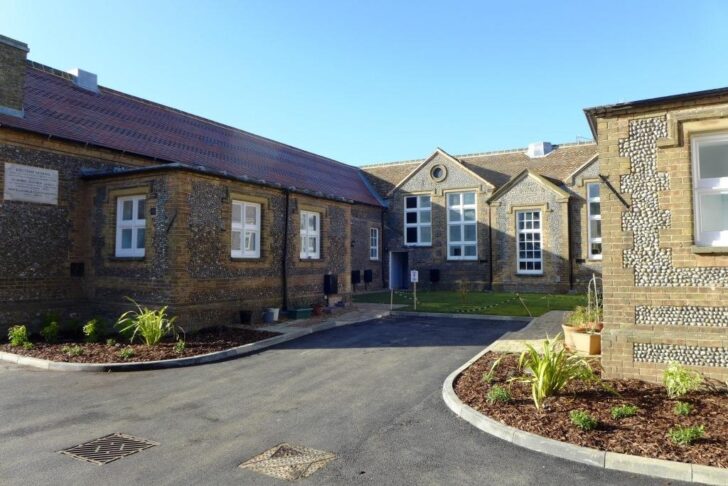
The private house sector will always deliver where there is demand, so targets and support for this sector are simply not required.
We must revert to a situation where we have a new supply of social housing which will not be market dependent and will cover the UK. This will secure more jobs and job security into the building industry and lead to more innovation with a new mix of traditionally and factory-built houses. These homes will be built to far better standards in meeting the net zero target – creating yet more jobs and opportunities in our economy.
As these houses will be built where needed, they will support a UK-wide urban & rural levelling up programme.
Over time, social housebuilding will reduce the demand for private rented housing.
This will bring more housing back onto the market as landlords bail out and sell up, increasing the supply of houses and lowering prices. Some of these houses can become social rented houses allowing renters to move back into an affordable home – perhaps even being able to save to buy.
We will see the return of a healthier more affordable and more stable market. This will require a consistent approach through a number of governments over the long term.
At the same time, we must plan for a better environment and protect green space with a proper green infrastructure.
It has already been shown that this will create a population with better physical and mental health. This means stepping up planning resources to allow better planning, expanding the scope of local plans and engaging each council with the green agenda. More work with communities to allow a bottom-up approach would enable increased local support for new developments. Expanding existing green belt legislation to protect new green networks must be created through local plans.
The economic argument
A new social housing programme brings many other benefits to the UK and its communities and people.
- Houses will be built all across the UK creating a spread of jobs to all areas.
- House buyers will have lower levels of debt.
- Many renters will gain more disposal income which will find its way back into the economy.
- The government will pay less in terms of housing benefits as well as not needing to support first time buyers.
- Employment in the private sector building industry will be replaced by employment and economic activity related to the building and maintenance of more new social houses, whilst market housing building activity will continue.
- Building houses where they are needed will help the environment.
- Innovation in building methods will creating additional new jobs in the fabrication and green technologies sectors.
- Converting empty offices and shops into residential properties will create new economic activity in town centres.
- Developers will be freed from the requirement to deliver affordable houses and we will see more small & medium building businesses develop as a result.
On top of this, as the demand falls in the private rental sector, investors will redirect funds to other sectors such as small businesses, leading to greater economic diversity. Eventually the housing market will be rebalanced and housing poverty will all but disappear.
Change will not be immediate, and will take place over a period. This timescale will allow readjustment and rebalancing, as well changes in government policies to ensure the benefits of such an approach are fully realised.
Conclusion
We need a government funded & led social house building programme to deliver a net increase of 1.5 million houses. This can be achieved through conversion and new build, ideally on brownfield sites where available, based on registered demand.
This housing must be treated as national infrastructure supported by compulsory purchase powers, a new tax regime, an end of ‘right to buy’ and no new land allocated for market housing until that already allocated has been developed.
The planning system must have its powers to protect re-established and enhanced. This is not to stop development, but to ensure a much higher quality of land management in the UK, with developments built in the right places, protection for green spaces and agricultural land. The developer loopholes must be closed.
All new houses must be future proofed to reduce running costs and emissions. Our town centres can be enhanced with new life.
It needs long term planning, a bold vision, and cross-party consensus, but it can be achieved.
